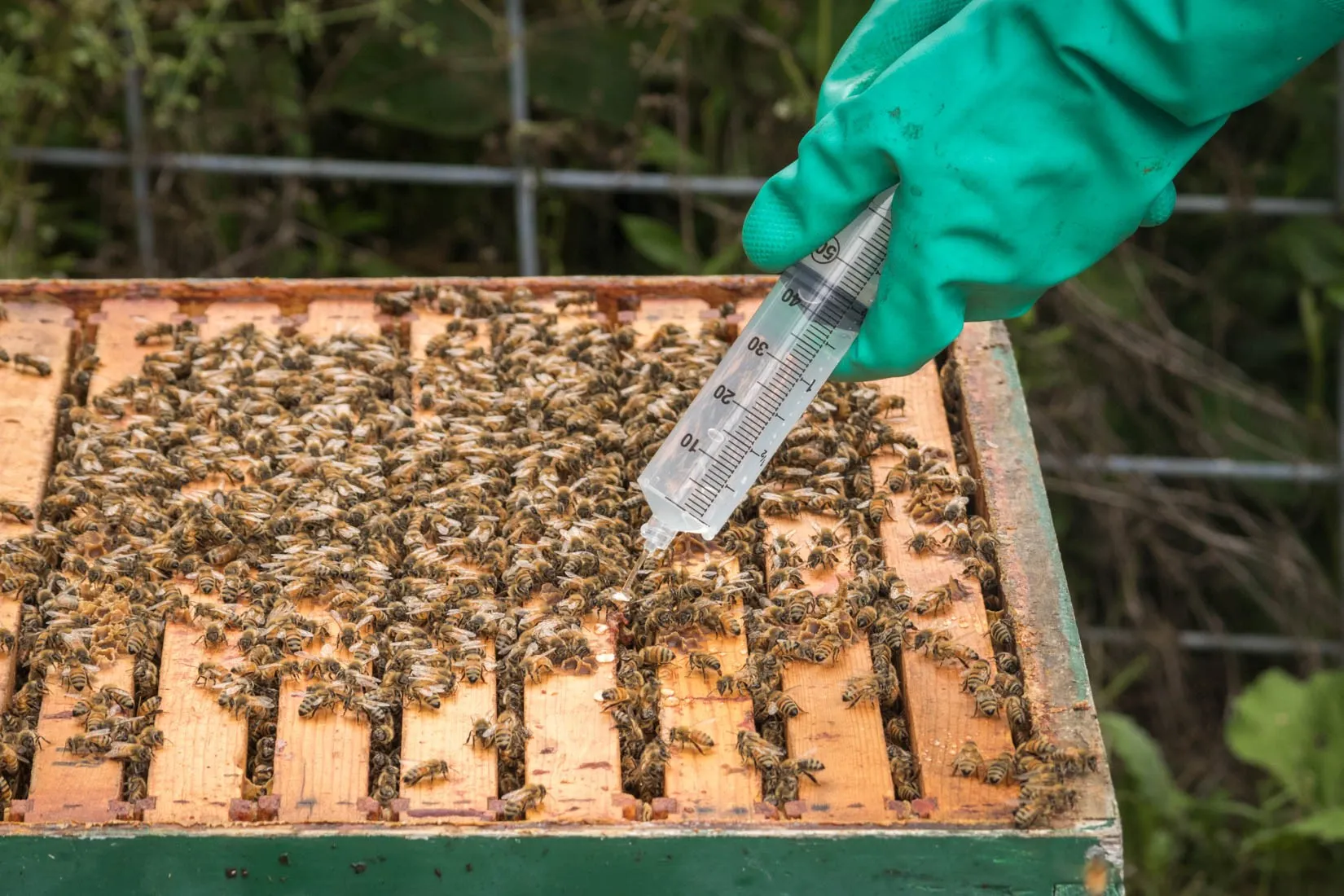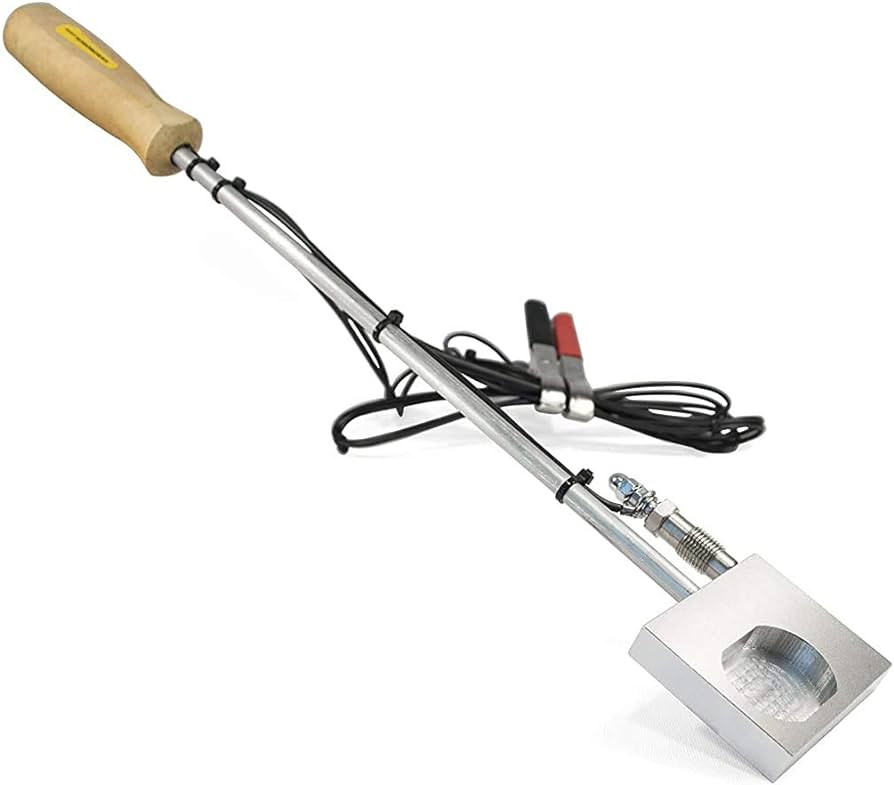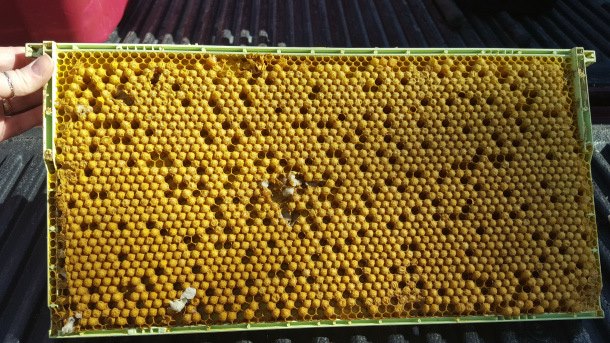r/Beekeeping Wiki
Treatment Options
- Introduction
- OA (Oxalic Acid) Dribble
- OA (Oxalic Acid) Vaporisation
- Apivar
- Apiguard / Hopguard
- Formic Pro / MAQs / Other formic products
- Drone comb culling
- Brood Break
- Treatments that do not work
- Powdered sugar
- Petroleum jelly
- Unlicensed treatments
- Extended release OA
TODO - add all the above treatments
Introduction
The vast majority of Varroa are going to be mating behind the cappings of brood. For some 70-90% of their life is spent behind cappings, depending on how long they live and how long they spend phoretic between mating cycles. Almost no treatments get behind the cappings of brood - The only one that does is formic - so all treatments placed inside the hive should cover one full brood cycle.
Please pay particular attention to Oxalic Acid Vapes in this regard. OAV regimen changes when a colony has brood, so you need to use it differently.
OA Dribble

Oxalic Acid Vaporisation

Oxalic Acid (OA) Vaporisation (OAV) is usually performed with some kind of electric wand, or gas torch. The OA is dosed for the hive, placed into the equipment and the hive is essentially fumigated with acid. The way this works isn’t properly understood, but it’s thought that the acid gets into the varroa via their feet, and acidifies their “blood” causing certain necessary functions to stop working, and they die. The bees, being much larger, can tolerate the acidification much better and it doesn’t seem to bother them at all once the OA wand is removed from the hive.
The legal maximum dosage is 1g per brood box. This dosage has been found to be far too low for effective varroa control. Instead most beekeepers opt to use 4 grams of OA per brood box, based on research done by the University of Florida.
OAV is a strange treatment, in that there are TWO ways of using it. The treatment schedule for a colony with brood and a colony without brood are vastly different. The reason being that OAV only kills phoretic mites that are in the colony at the time of vaporising (or for a very short period after), so any mites emerging after treatment will not be impacted. A full schedule for Treatment is described below.
Realistically, it’s quite hard to over-do oxalic acid. It’s almost harmless to the bees in the dosages we’re giving to the hive. However, what is possible is under doing oxalic acid. By not treating enough times to cover a whole brood cycle, or not enough times in 3 weeks. Remember that varroa stay phoretic for only a short period. If you treat once a week for 4 weeks, there’s a period of 6 days where mites can emerge and reenter cells before the next treatment.
The Treatment
Whilst the colony has capped brood: 4g per brood box every 4 days for 3 weeks. Some people opt for 3g every 3 days for 3 weeks.
Whilst the colony has no capped brood: 4g per box, once or twice.
An example full cycle treatment is as follows:
| Day | Dosage (per Broodbox) | Worker | Drone |
|---|---|---|---|
| 1 | 4g | ||
| 2 | |||
| 3 | capped | capped | |
| 4 | |||
| 5 | 4g | ||
| 6 | |||
| 7 | |||
| 8 | |||
| 9 | 4g | ||
| 10 | |||
| 11 | |||
| 12 | |||
| 13 | 4g | ||
| 14 | |||
| 15 | emerge | ||
| 16 | emerge | ||
| 17 | 4g | emerge | |
| 18 | emerge | ||
| 19 | |||
| 20 | |||
| 21 | 4g |
Apivar
Apiguard / Hopguard
Formic Pro / MAQs / Other formic products
Drone Brood Culling

Drone brood culling is one of the best chemical free treatments you can do in a hive. Some of the reasons why people don’t use it is because it takes more work than other treatments, it can become a breeding ground for mites, and it will not work if a mite bomb goes off. There are pro’s and cons to every treatment, but for people who don’t want to use chemicals on their bee’s, this is the perfect fit.
How drone brood culling works is you take either a frame specifically made for it, or use a empty frame. The bees will take advatange of this make most of the frame drone comb. this gives mites plenty of room to reproduce. After 3-4 weeks, you take this out and you can either freeze the frame, killing both the drone’s and mites, or cut it out. If you cut it out you can melt it down for wax, fed it to your chickens (if you have any), or just throw it out. This works very well at killing most of the mites, making it so you have a small population of mites for the whole year.
It is of the upmost importance if you decide to use this treatment method to remember to remove and cull the drone brood. If you forget, you will have just raised a large population of mites, making the problem worse than before. Queen breeder’s usally cannot use this treatment becuase they need a lot of drones. Anthor thing to note is if a mite bomb goes off in the fall time, this will not work for two reasons. One, there are much less drone brood produced at this time, and two, by the time the mites have gone into the cells to reproduce, it will be too late.
Brood Break
Brood break is something that can happen naturally or cuased by the beekeeper. A Brood break means a time or period where there are no eggs lain. Brood breaks are cuased either a supercedure, swarming, or something cuased by the beekeeper. This disturpts the mites reproductive cycle, and some beekeepers use some other treatement, becuase not all treatments kill mites in brood cells.